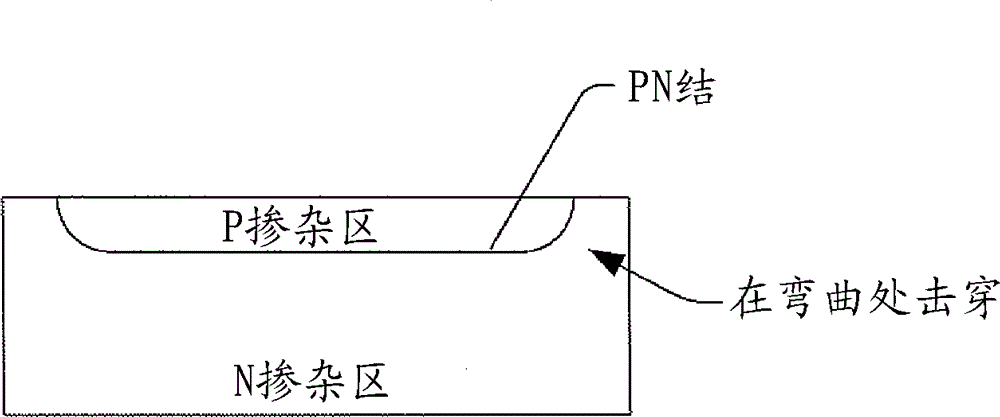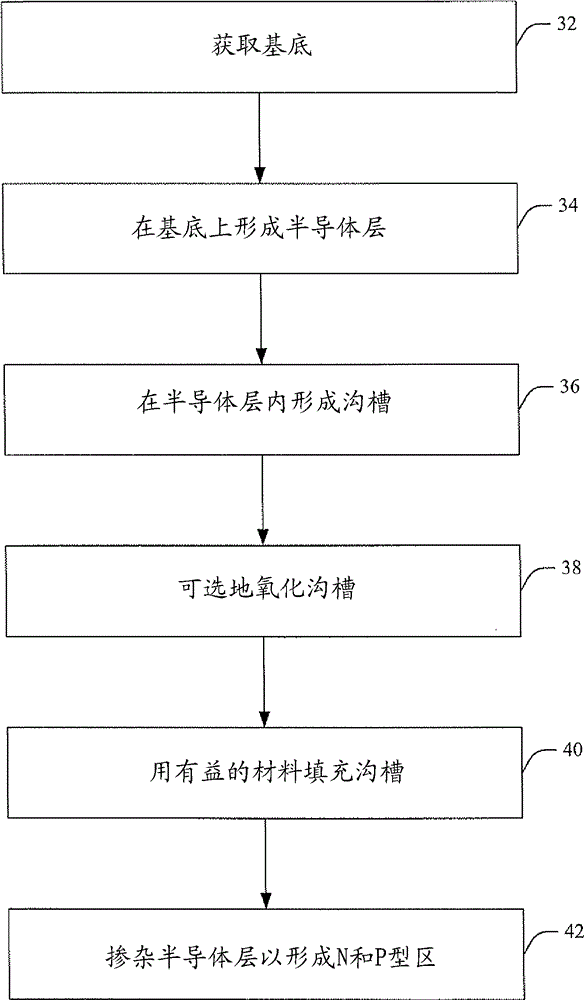Implementation of avalanche photo diodes in (BI) CMOS processes
A photodiode and process technology, applied in the field of medical imaging, can solve the problems of large volume, obstructed design rules, poor working effect, etc., and achieve the effect of increasing detection efficiency
- Summary
- Abstract
- Description
- Claims
- Application Information
AI Technical Summary
Problems solved by technology
Method used
Image
Examples
Embodiment Construction
[0023] refer to figure 2 and 3 , which show photodiodes 10 fabricated to suppress, reduce, eliminate, etc., the premature edge breakdown associated with conventional photodiodes driven in conventional Geiger or other modes, such as avalanche photodiodes (APDs) . figure 2 depicts a side view of photodiode 10, image 3 A top view of photodiode 10 is depicted.
[0024] The photodiode 10 includes a semiconductor layer 12 (eg, silicon (Si), germanium (Ge), gallium arsenide (GaAs), etc.) formed (eg, by photolithography, lithography, etc.) in on a substrate 14 (eg, silicon, glass, sapphire, etc. wafer). The semiconductor layer 12 includes an n-type (n− doped) well 16 arranged adjacent to a p-type (p+ doped) region 18 , between which a pn junction is formed. Such regions are formed by known techniques such as ion implantation (in which ions are implanted, thereby altering the physical properties of semiconductor layer 12 ), diffusion, and / or the like.
[0025] A trench 20 is f...
PUM
 Login to View More
Login to View More Abstract
Description
Claims
Application Information
 Login to View More
Login to View More - R&D
- Intellectual Property
- Life Sciences
- Materials
- Tech Scout
- Unparalleled Data Quality
- Higher Quality Content
- 60% Fewer Hallucinations
Browse by: Latest US Patents, China's latest patents, Technical Efficacy Thesaurus, Application Domain, Technology Topic, Popular Technical Reports.
© 2025 PatSnap. All rights reserved.Legal|Privacy policy|Modern Slavery Act Transparency Statement|Sitemap|About US| Contact US: help@patsnap.com



